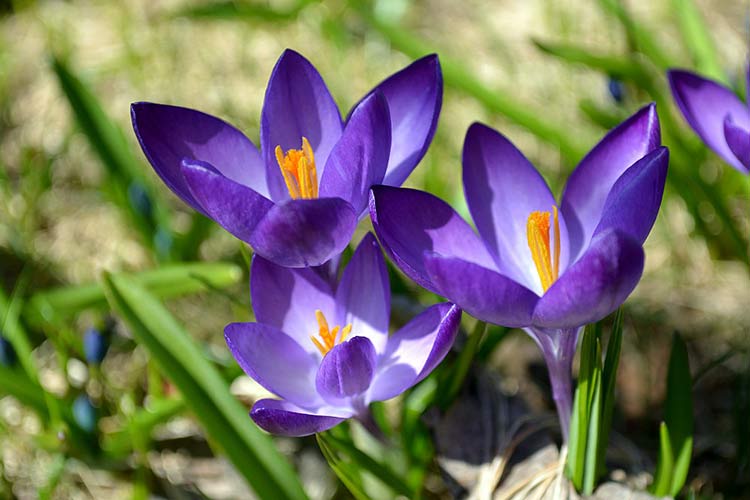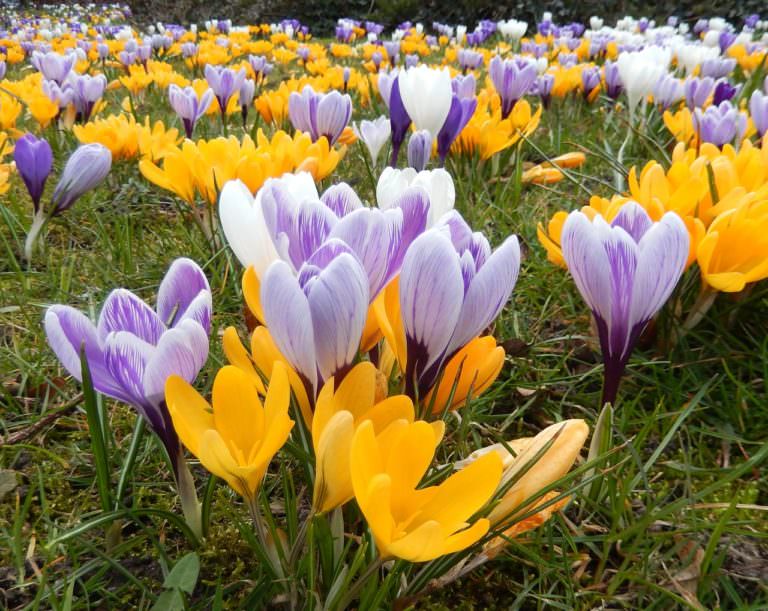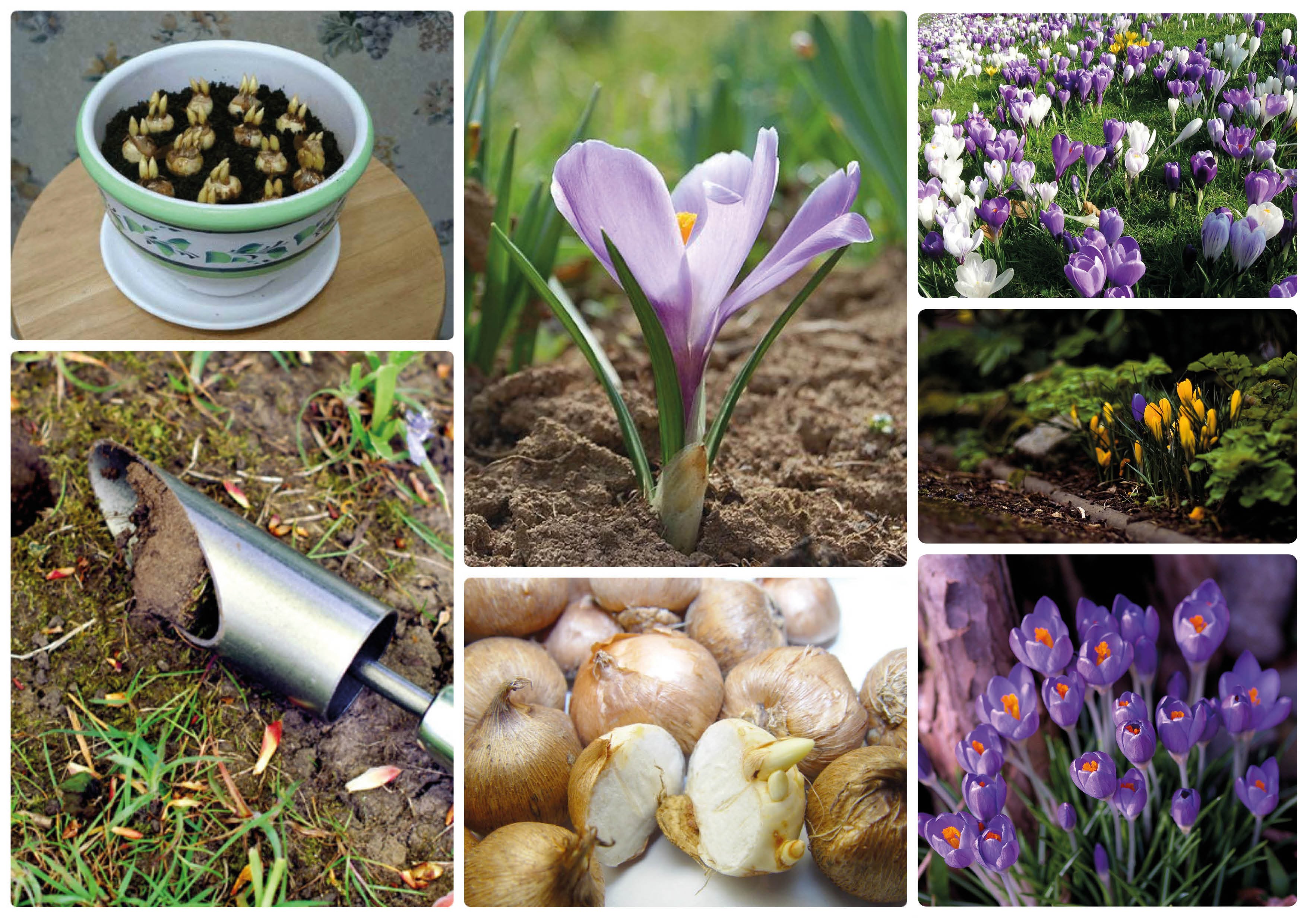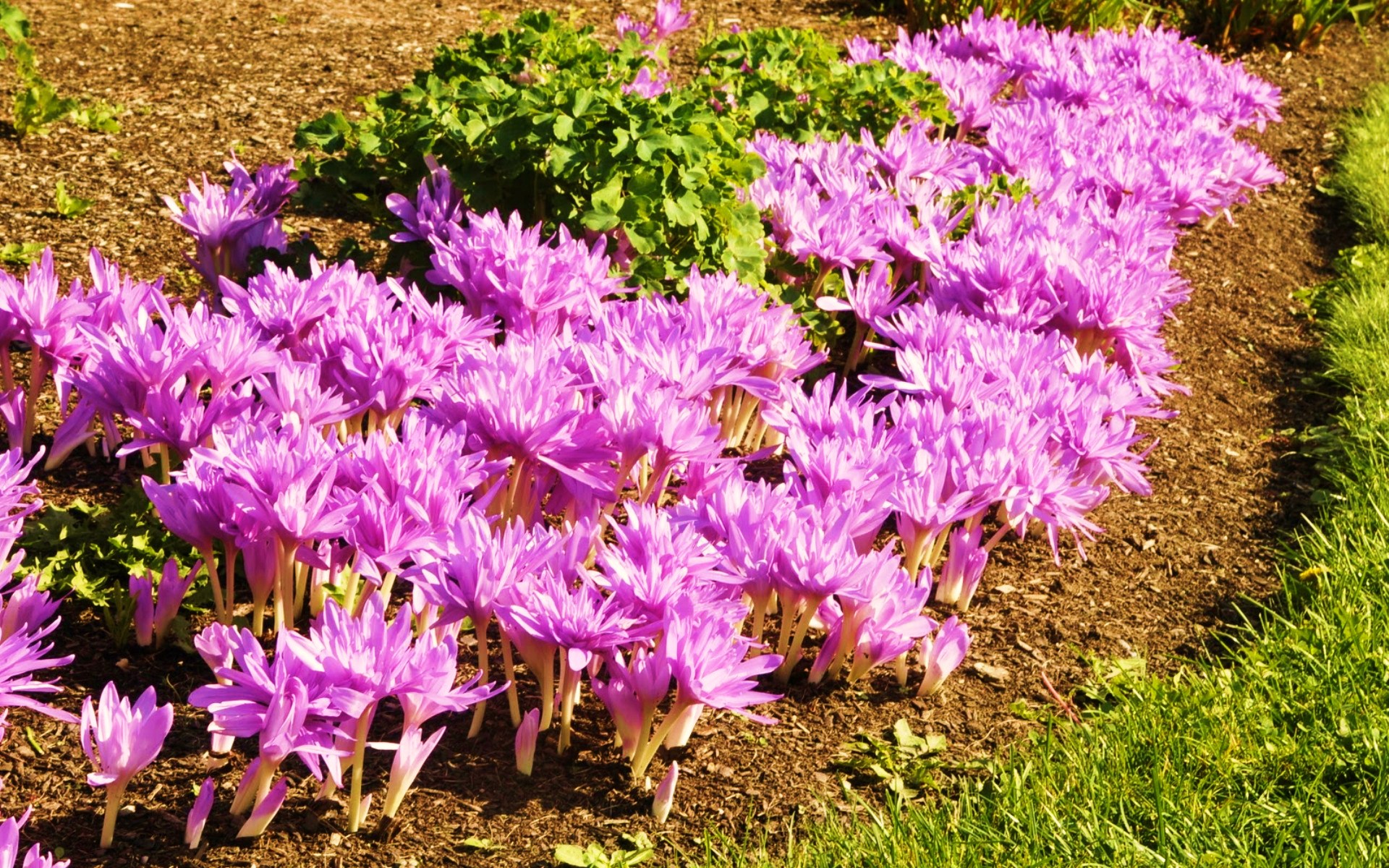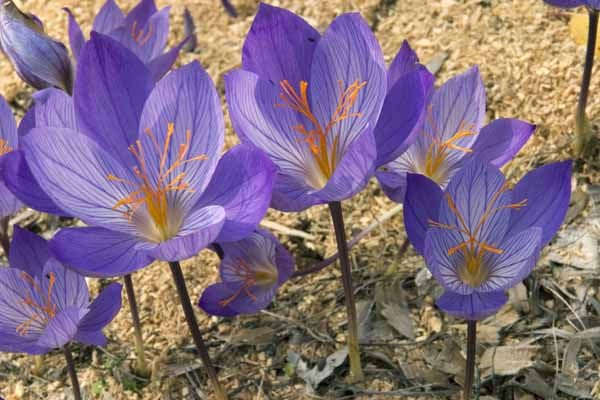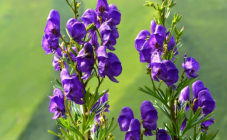Content:
In the Kasatikov family, crocuses, which are corm perennials, stand out for their beauty. They are decorated with ridges, rock gardens, rocky cages. Saffron (another official name for the plant) is planted along garden paths and lawns are created by water bodies. In order for the plant to please summer residents with its presence every year, you need to know how to properly care for crocuses.
In the wild, there are several dozen varieties of this plant. Hybrids are grown in the home garden. In one place, low stemless flowers can grow well for about 4 years, then it is recommended to find a new site for them.
Many summer residents began to practice annual crocus transplants in the hope of constantly receiving large flowers. In this case, one bulb usually gives from 2 to 4 buds, which delight the eye with the brightness of colors for 3-4 weeks.
All types of saffron are subdivided into 2 groups: blooming in spring and autumn. This allows you to admire the crocuses twice a year. In the southern regions of Russia, the period falls on February and August, in central Russia - in April-May (immediately after the snowdrops) and September.
Varieties
Popular representatives of culture
| Variety | Description |
|---|---|
| Spring blooming | |
| Light yellow | Produces up to 7 golden flowers at 8 cm high and 7.5 cm in diameter |
| Spring | Mostly single buds, but in some varieties you can see 2-3 pieces. on the stem. They are represented by a variety of colors: purple, lilac, white and even striped. The sizes are also different - from 3 to 9 cm in diameter |
| Narrow-leaved | On the bush, you can see up to 5 pieces. golden flowers with reddish veins. In some varieties, the perianth is tinted outside with strokes |
| Autumn blooming | |
| Sowing | Yields 3 purple-purple buds 8 cm high and 7 cm in diameter |
| Beautiful | Outwardly similar to the seed variety, but have lighter shades, about 5 flowers are formed on the stem |
| Pretty | One onion is capable of producing up to 10 flowers at a time, painted in light purple tones. They stand out for their pleasant aroma and large buds - 10 cm in height and 8 cm in circumference |
In addition to traditional varieties, on the flower beds of summer residents, you can see imported hybrids of Dutch selection. They are also extraordinarily beautiful, but very picky about their care.
If you plan to use tubers, then it is better to dig them up in June-July (regardless of the time when crocuses are planted) and store them in a dark, well-ventilated place before planting in open ground.
Each plant forms nests in which "babies" appear after flowering. If the crocus is not touched for several years, then it will develop into a powerful bush, giving a large number of young planting bulbs.
If you do not collect the seeds that form on the stem, they are blown away by the wind and then germinate, forming a whole clearing.
Growing saffron from seeds
Only a few summer residents are at risk to breed crocuses from seeds - usually this material is used by breeders. But if there is not a single crocus bush on the site yet, and you managed to buy their seeds, if you have patience, you can use this breeding method.
the main thing – take into account the recommendations given by the instruction:
- prepare a seedling box with a nutrient mixture;
- seeds are laid on the surface;
- the box is covered with polyethylene film;
- as soon as the first shoots appear, you need to immediately open;
- when the seedlings germinate significantly, they can be planted in a flower bed or distributed in pots.
You can plant the seeds immediately in a permanent place - they are frost-resistant, but they will germinate more slowly than in the seedling box.
When to plant crocuses
It is important to know when to plant crocuses - it all depends on the type of plant. Those varieties that bloom in spring are planted in open ground in September-October, before the onset of real frosts. Autumn crocuses are sent to the ground in summer.
As for the seeds, they are sown at the same time as the bulbs, but spring planting can also be done. Previously, the seed goes through a stage of stratification, except for those varieties that will be sown in the fall.
When deciding when to plant crocuses in seedlings in open ground, they look at the readiness of the seedlings. All warm months are suitable for them. If the autumn turned out to be cold, then there is a reason to keep the seedlings in pots until next year.
Landing rules
If there is a desire to breed crocuses, planting and care in the open field are carried out taking into account all the conditions of agricultural technology:
- this flower belongs to the light-loving and is afraid of drafts, although in the hot south it develops better in the "openwork" shade;
- for cultivation, fertile soil is required, with good water and air permeability;
- crocuses are planted in sufficiently moist, loosened soil.
The land in the flowerbed is prepared in advance. If it is weakly draining, it is recommended to add river sand to the composition. Sod land, compost, peat will help to improve fertility. You can use manure, but only rotted - crocuses do not tolerate fresh organic matter.
The site where the saffron planting is planned is well dug up and must be harrowed. Then, grooves are formed into which corms will be planted or seeds will be sown.
Planting depth is important, it depends on the selected material:
- if adult onions are transplanted, they are buried 10-12 cm;
- it is better to lower children in the fall by 6-8 cm, with a spring planting 4-5 cm is enough;
- seeds are introduced into the soil closer to the surface (no deeper than 3-4 cm) so that they germinate faster.
These parameters are averaged, the summer resident will also have to take into account the quality of the soil. On heavy soils, the planting depth should not exceed the size of the bulb itself. On lightweight soils, the hole can be doubled.
Autumn crocuses
It's nice to see a brightly blooming flower bed on your site at the end of the season, contrasting against the background of falling foliage. At the same time, the colors of autumn crocuses are richer than those that delight the eye in spring.
This season's saffron are less demanding on light and thrive in shaded areas. But autumn flowers do not like drafts and cold winds.
This time is characterized by rainy weather, and crocuses do not need waterlogging. Therefore, only well-draining areas should be selected for them.
Autumn crocuses are planted until they bloom - from June to early August. If planted later, the plant will be weakened, it may take several years to recover. Spring flowers are often planted singly, autumn flowers are best placed in groups of at least 5 pieces.
As for the care of crocuses that bloom in autumn, it is easier than that of spring plants. First of all, there is no need for watering, except in cases where the autumn turned out to be dry.
Transplanting autumn crocuses
Transplanting autumn flowers is often not recommended - it is better to wait until the nest becomes too crowded. This happens approximately in the 5th year of life. Crocuses are transplanted to a new place at the same period when the main planting is carried out.
Bulbs selected for relocation are dug up 2-3 months before being moved to a new site (i.e. in spring). They are placed in a warm, well-ventilated area to dry.
Then the old and exfoliated roots are removed, the bad scales are removed and the bulbs are sprinkled with wood ash. Severely damaged and affected by rot are thrown away.
Planting and leaving in the suburbs, in the Urals, in Siberia
When planning to breed crocuses, cultivation and care is carried out taking into account the regional characteristics of the climate. Saffron are winter-hardy plants, but the approach to agricultural technology, for example, in Siberia, is slightly different from the southern floriculture.
Moscow suburbs
All the recommendations for planting and caring for crocuses described above are quite acceptable for this region. The Moscow region is considered a fertile climatic zone for many horticultural crops. Therefore, crocuses are developing well here. But the autumn planting is recommended no later than October so that the flowers have time to settle in a new place before frost.
Flowers do not need frequent watering - this is an area with a lot of rainfall. The average winter air temperature is -28 degrees, so no special shelter is needed for the crocus, a layer of mulch in the garden is enough.
Siberia
The region is dominated by a continental climate characterized by strong cold winds. Therefore, saffron in the open field is uncomfortable even in summer. It is better to grow it at home or in greenhouses.
If someone dares to plant crocuses in the garden, then this should be done in late August-early September, opting for spring varieties. For the winter, flowers are provided with a good shelter from spruce branches.
Ural
This region can be conditionally divided into several climatic zones. The peculiarities of growing crocuses in the Urals depend on this. In the open ground, saffron is more often grown in the southern regions of the region, using the features of agricultural technology suitable for the Moscow region. It is better not to delay the autumn planting of flowers and spend it in the first half of September.
In the northern Urals, the climate is identical to the Siberian one. Therefore, crocuses should be grown here taking into account the characteristics of the specified region. At the same time, it is necessary to take into account the negative feature of the Ural climate - the low temperatures in the summer period.
Crocus at home in a pot
The decorativeness of saffron also attracts lovers of home floriculture. They tend to grow crocus in pots on the windowsill, but not everyone succeeds. For saffron to bloom at home for more than one year, you need the right approach.
Having decided to start a saffron at home, they decide how to grow it, based on the available material. Seeds can be used for this purpose, but daughter bulbs are considered the best option. At the same time, exclusively Dutch hybrids of spring flowering ("Vangart", "Yellow Mammoth", "Flower Record", etc.) are chosen - they are best acclimatized in an apartment.
The most appropriate time to separate the babies is after the crocuses have faded and the leaves turn yellow on them.This is roughly July-August (depending on the region).
Preparation of planting material
For forcing, the bulbs go through a long preparation stage. The strongest children are selected, without defects, and they are kept for 3 months in certain temperature conditions.
Features of storing saffron bulbs
| Term (week) | Temperature, ° C |
|---|---|
| 1st | 32-34 |
| 2-3rd | 20 |
| 4th-8th | 17 |
| 9-12th | 4-9 (in the refrigerator) |
After hardening, the bulbs can be planted in a pot or container. The container should be wide, but not deep. Plants should not be planted in batches - if forcing is carried out in seedling boxes, then a distance is maintained between the plants. The bulbs should not touch the walls, otherwise they will start to rot.
Actions after landing
Once the bulbs are in the pots, the soil around them is squeezed and watered. At the time of rooting, containers with crocuses are taken out into a dark, cool room, where the temperature is kept no higher than 9 degrees Celsius.
Despite the fact that rooting lasts about 2.5-3 months, the pots in such conditions withstand only 2 weeks. Watering at this time is carried out as needed - when the top layer of the substrate dries up.
Care
Without waiting for the emergence of shoots, crocuses are brought into a room with a moderate temperature (15-20 degrees). The pots are placed on north or west windowsills to avoid direct sunlight. If this is not possible, use shading.
Watering should be infrequent - 2 times a week is enough. Plants should not be sprayed; crocuses prefer low indoor humidity. When the flowers appear, the water is no longer introduced into the pot, but into the pan, preventing it from stagnating (the excess is immediately drained).
During the flowering period, saffron does not need additional fertilizing - it has enough substrate nutrients.
As soon as the plant has lost its color, the leaves are pruned and the bulbs are left to dry in the pot. But they cannot be stored in a warm room, so the containers are taken out to the utility room or cellar (if it is a private house) or to the apartment loggia. Then the bush is disassembled into children, and all the procedures for forcing plants are repeated.
Growing saffron at home is not as painstaking as following the described rules requires. Crocuses bred in this way produce good bulbs that can take root in open ground flower beds.
